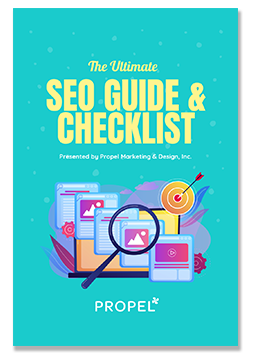We talk a lot about SEO, and we give you, our readers, much insight into how to use it to your advantage.
For the past two years, we’ve offered a detailed guide about the SEO best practices for 2020 and 2021, and they were a hit! It’s 2022 now, so we thought we’d expand on our SEO guide and give you guys some insight into conquering your SEO campaign this year.
So, here we go.
Wondering what’s the latest in SEO?
Or, what SEO strategies should be focused on in this brand new year of 2022?
With terms like Core Web Vitals, Search Intent Google Passage Ranking, and Feature Snippet coming in strong, it’s easy for the everyday non-techie to feel overwhelmed when it comes to tackling SEO. And don’t get us started on all those Google algorithm updates.
But the truth is, with the right strategy in place, you can outrank your competition.
In this blog post, we’re looking at actionable items anyone (non-techies), including you, can do today to achieve your SEO goals in 2022.
We’re going over what matters for SEO this year, from beginner to advanced!
- Foundation for SEO
- Tried-and-true best SEO practices
- New techniques and ranking factors
- What top SEO experts say matters in 2022
- Loads of resources and tools to propel your SEO game
> Don’t have time to read this whole article right now? Click here and we’ll email you our SEO guide.
SEO 101
If you’re already well versed in the basics of SEO, you can skip this section.
For those newbies out there and others who could use a refresher, let’s go over some basics.
What is SEO?
SEO stands for “search engine optimization.” It boils down to anything that improves the internal and external aspects of a website to increase the traffic the site receives from search engines.
Wikipedia provides a more detailed description:
Search engine optimization (SEO) is the process of affecting the online visibility of a website or a web page in a web search engine’s unpaid results—often referred to as “natural,” “organic,” or “earned” results.
In general, the earlier (or higher ranked on the search results page), and more frequently a website appears in the search results list, the more visitors it will receive from the search engine’s users; these visitors can then be converted into customers.
SEO may target different kinds of search, including image search, video search, academic search, news search, and industry-specific vertical search engines.
SEO differs from local search engine optimization in that the latter is focused on optimizing a business’ online presence so that its web pages will be displayed by search engines when a user enters a local search for its products or services. The former instead is more focused on national or international searches.
How search engines work
Before you can dive into every element of SEO, you have to start with the basics, including an understanding of exactly how search engines work.
Also, check out what Matt Cutts had to say about Google:
“When you do a Google search, you aren’t actually searching the web. You’re searching Google’s index of the web, or at least as much of it as we can find.
We do this with software programs called spiders. Spiders start by fetching a few web pages, then they follow the links on those pages and fetch the pages they point to; and follow all the links on those pages, and fetch the pages they link to, and so on, until we’ve indexed a pretty big chunk of the web; many billions of pages stored on thousands of machines.” – Matt Cutts, How Search Works
Are you curious how search engine spiders “see” your website? Check out Browseo.
SEO 101 Resources
Want to learn more about the basics of SEO? Check out these awesome resources:
- Search Engine Optimization (SEO) Starter Guide
- Beginner’s Quickstart Guide to SEO Success
- Moz SEO Learning Library
- Yoast SEO basics
Getting Started with SEO Strategies for 2022
While some SEO strategies remain tried-and-true, others are emerging due to factors like Google’s search algorithm changes and people’s search habits continually evolving to include the growth of voice search and the increase of mobile devices in search over a desktop.
“If you’re not on page one, then you might as well be nowhere!” – SEO Experts, Like ALL Of Them!
So, what should you be focusing on right now to help you get to page one of Google (and the other search engines)?
It used to be that mobile, security, and site speed gave you an easy up in rankings over your competition. However, with Google algorithm changes happening regularly, making sure your website is mobile-friendly, secure, and provides quick load speeds are necessities for 2022, and none will guarantee you top ranking.
Yes, everything that was important for SEO in 2021 is still important in 2022; however, there’s more…
So, what’s the newer stuff that will contribute significantly to your rank in 2022:
- AI (artificial intelligence)
- Significant rise in visual search
- Voice search is surging
- Prioritizing the user like never before- a killer user experience (UX)
- Core Web Vitals
- Domain authority
- Search intent
- Featured snippet optimization
- Video, video, video
- Google Passage Ranking
- Awesome CTRs (click-through rates)
You may be thinking that these things were incorporated into your 2020 or 2021 SEO campaigns, and that’s great if so. But what we’re telling you is that these items need to become a priority if you want to make a dent in rank.
We’ll discuss them in detail later in the post, but keep in mind that ALL of these practices are important; these are not in any particular order.
First, let’s talk mobile, page load speed, and security: the basics.
Mobile-First Indexing
The internet has transitioned into a mobile-first world. These handheld devices are now our go-to source for searching the web.
Therefore, it’s only natural that Google strongly emphasizes a website’s mobile performance.
In March of 2018, Google finally rolled out its mobile-first indexing.
In the months that followed, millions of people got emails from Google with a “Mobile-first indexing enabled” message.
Google offered up this information when it announced the rollout:
“To recap, our crawling, indexing and ranking systems have typically used the desktop version of a page’s content, which may cause issues for mobile searchers when that version is vastly different from the mobile version. Mobile-first indexing means that we’ll use the mobile version of the page for indexing and ranking, to better help our – primarily mobile – users find what they’re looking for.” – Webmaster Central Blog
“Mobile-first indexing enabled”
What’s important to note is that Google’s Mobile-first indexing ranks your website based on the content of your mobile experience and not your desktop experience as it did in years long ago.
So if you have content hidden on the desktop version of your site, it will ignore that information when it considers your ranking because it’s first observing the content on your mobile site.
Is your website mobile friendly? Take Google’s Mobile-Friendly Test to find out.[/vc_column_text][/vc_column][/vc_row]

Website Speed
Websites that take………….f…o…r…e…v…e…r to load will end up falling in their rankings.
And if, by some miracle, you’re one of the websites with a slow load speed that doesn’t see the drop in Google, you’re going to see the effects of bad user experience. So make page load speed a priority.
In July 2018, Google officially confirmed it uses page speed as a ranking signal in mobile search ranking. This comes with the understanding that mobile users are on the move, in a hurry, and need answers quickly.
Page Load Speed Tools:
- PageSpeed Insights from Google
- GTmetrix: GTmetrix loads your site. Then shows you real-time loading speed and recommendations for getting your website to load faster.
Website Security
In line with their HTTPS everywhere initiative, Google is now flagging URLs that are not secure.
SSL (Secure Sockets Layer) is the standard security technology for establishing an encrypted link between a web server and a browser. This link ensures that all data passed between the web server and browsers remain private and integral.
SSL certificates are simple to purchase from your hosting company, and they can walk you through the installation process.
After installing the certificate on your site, make sure you do a find and replace on your site to replace any instance of HTTP to HTTPS. If you’re running on WordPress, you can use a plugin like Velvet Blues Update URLs.
RankBrain / Artificial Intelligence and Automation
People often get scared when they hear the term RankBrain, as we start to get into the wild world of AI (Artificial Intelligence).
Don’t be scared of these terms….
RankBrain is a component of Google’s core algorithm, which uses machine learning (machines’ ability to teach themselves from data inputs) to determine the most relevant results to search engine queries. It measures how users interact with search results and rank them accordingly.
To win at RankBrain, you need to win at:
Dwell time – How long a visitor stays on your page
Dwell time is significant to Google. It takes it as a huge indicator that your audience is interested in what you have to say. To win at dwell time, make sure you’re providing the best content possible.
CTR – The percentage of people that click through your result from Google
To get a better CTR, make sure you optimize your page title tags and meta page description tags to entice people to click from Google onto your web page. And, as stated above, it’s becoming a priority for Google, so it is for you, too.
Want to have better CTR? Heck ya! Don’t we all! Use words like the following in your title tags and page description tags:
- Best
- News
- Reviews
- Top
- Guide
- Step-by-Step
- Right Now
- Today
- Information
- Community
- Simple
- Quick
- Easy
These words have been proven to rank better when used in your title tags. Why? People are drawn in by these words, so they click through. Meaning they get more clicks leading to a higher ranking.
Keep in mind that machines can’t do this SEO thing alone. Experts believe that these automated forms of SEO will need some human hand-holding to ensure spam stays at bay and quality is high. Staying competitive with your content is always important, and that requires a human touch. For now.
Another excellent thing about automation: many SEO tools are now using automated functionalities to make site changes. This means that you don’t have to manually dive into some critical updates; they’re done for you. We’re down for that.

Image from Google Lens
Visual Search
Visual search went big in 2021, and it’s going even bigger in 2022, so get into it if you’re not already. Have you tried it yet? We’re talking top-notch technology within a relatively new product – meaning, it’s only gonna get bigger and better.
Grab your cell and open Google Lens; start focusing on items in your house and see what happens- there’s a lot (over 1 BILLION items) to discover.
But why do you want to use this feature? Oh, because it’s darn handy for helping you when it comes to pesky things such as shopping, directions, recipes, identifying pretty much anything…
The next generation of consumers (younger millennials) are loving visual search and want more of it. It may not be an overall game-changer right now, but experts say this is its year.
Get your website on board by using super descriptive file names and being sure to write deliberate alt text for every image you have. Also, you need to be an authority, keep your site updated with new information, and keep your images big, bold, meaningful, and at the top of your pages.
Pro tip: Don’t forget to optimize every one of your images! This will help with all aspects of SEO, including page load speed, keywords, and UX.
This may go without saying, but over 90% of these searches are made using a mobile device. Yet another reason for your mobile optimization to be on point.
Voice Search / Conversational Search in Keywords
As search by voice continues to surge, the instant answer without search results will continue to be on the rise, and Google, Apple, etc., will have to continue to discern simple question / answer problems.
How can small businesses win? Start to include more question and answer specific content for your audience in your content marketing plan. Make sure to include conversational keyword search terms that your buyer personas use by doing the proper keyword research.
Different types of voice queries include:
- The answer to a question / problem based
- The question itself / explicit and direct
- Description of the problem / symptom-based or detailed
- Description of cause / symptom-based
- Brand name or product parts / direct and educated
- Informational queries / awareness stage, or uninformed
Look to solutions like Answer the public when drafting content to get insight into commonly asked questions around a given topic, then provide the answer.
Maybe you haven’t personally bought into the whole Google Home or Alexa experience, but in January of 2020, there were already over 157 million of these devices in American homes. For the record, almost 25% of the adult population has a smart speaker.
Want your mind blown? Experts say that by 2025, over 75% of Americans will have at least one smart speaker in their home.
Your site needs to be optimized for voice search, like, yesterday whether you’ve personally bought into it or not. It will help so much with your ranking because it’s still fairly new, and your competition may not be doing this… YET.
Here’s what to do:
- Within your website copy, ask a question and then answer it- “Why is the sky blue?” “The sky is blue because…”
- Have a FAQ page
- Optimize for and create featured snippets (just keep reading … we dive into featured snippets later in this article)
- Check out our complete guide on optimizing for voice search
UX (User Experience) & Content Overhaul
You have to focus on your user! Too often, businesses get caught up worrying about what matters to Google, and they lose sight of connecting with the user.
But, here’s the facts, folks: Google genuinely, aggressively, and obsessively cares about what the user thinks. So if you’re truly concentrating on Google, you MUST BE truly concentrating on your user.
UX Starts with Great Content
It’s more important to focus on quality content over quantity. It also might be time to consider re-organizing your site structure. Maybe even consider pruning back content that is no longer relevant, or (like we’re currently doing within this post) make it relevant by adding more, newer information.
Quick Content Wins Website Updates
Dive into your analytics, and look at what pages are “just there.” Meaning they’re sitting on your website but not doing anything.
With SEO in mind, go through your website and:
- Update and/or remove any information that isn’t relevant or accurate
- Replace outdated stock images with new
- Lengthen short pages with more detail
- Combine multiple pages / posts surrounding one topic into one longer, more detailed page
Rank Better by Combining Pages
In a Webmaster Hangout, Google’s John Mueller answered questions about when combining pages makes sense and when it doesn’t make sense. Mueller explained that combining weaker pages into a single, stronger page could propel your page ranking. The combined pages must be complementary and better address one single topic as a combined robust page versus several weaker pages.
Navigation Structure
Make sure that your navigation structure makes sense to your visitors. When they land on a specific page, they need a breadcrumb link back to a subpage or to easily navigate to the next logical step without confusion. If not, they’ll end up bouncing off your website.
Bounce Rate
If a website visitor clicks from Google to your website, lands on a page, doesn’t see what they want, can’t find the navigation to get where they need to go, and click back to Google, it’s called a bounce.
A high bounce rate can have a negative influence on your SEO. It indicates to Google that you may not be answering your visitors’ search query, and they’ll ultimately stop pushing your page forward in the SERPs.
Accessibility
Accessibility also falls under the category of user experience. It’s about how well your website can be used by visually impaired, color blind, or deaf visitors.
Wikipedia words it like this: Accessibility refers to the design of products, devices, services, or environments for people with disabilities. The concept of accessible design ensures both “direct access” (i.e., unassisted) and “indirect access” meaning compatibility with a person’s assistive technology (for example, computer screen readers).
Google doesn’t view your website how you see your site, with pretty images and formatted text. Google is essentially both deaf and blind in the way they view your site. This is why we use Alt image tags, for example, to describe what an image is so that a visitor who can’t view the image will be told what the picture is displaying.
UX (User Experience) & Content Overhaul Resources:
- SEO & UX: How User Signals Impact your Rankings
- Buyer Persona Workbook
- Your Ultimate Guide for Reviewing Your Marketing Efforts
- 6 Keys to a Solid Website Navigation Structure
- 9 Steps to a Successful Website Campaign
- 13 Common SEO Myths… Busted
- 31 Horrible Website Mistakes You’re Making and How to Fix Them
- Content Marketing Planning Templates
- 13 Industry Experts Chime in About Content Marketing
Writing for SEO
Writing for SEO has changed dramatically over the years.
Follow these 8 steps to guarantee success in your 2022 SEO writing efforts.
- Make Sure Your Persona’s Needs are Being Met
- Define User Intent
- Define Keyword(s) Based on Intent
- Come up with a Compelling Topic
- Create a Basic 1st Draft (don’t EVEN think about SEO for this draft)
- Create Your Second Draft
- Before You Push Publish Review Your Draft
- Publish and Spread the Word
In ‘8 Simple Steps for Writing Killer SEO Content’, we do a deep dive into each of these steps.
Core Web Vitals
Alright, y’all, Google made Core Web Vitals a ranking factor last year, which means you need to know your metrics, or you stand the chance of a quick back-pedal. Know what’s going on and quickly manage falling page speed, failing mobile quality, inadequate optimizing, and poor security.
More new, you’ll want to consider the users’ emotions when they visit your page. How does it make them feel? This is a great example of how prioritizing the user in 2022 will pay off big time.
Here’s what’s being judged:
- Page load speed
- Page responsiveness
- Page accessibility and navigation ease on mobile devices
- Site security while being used
If you’re not on this now, you best start. It’s a solid win for your users and will lead to more conversions- a solid win for you.
Pro tip: Check out your competitor’s interface and make yours better.
Also, read our article on SEO & UX.
 Domain Authority
Domain Authority
We all do it: E-A-T. It’s how we live and survive, and thrive. Guess what? It’s how your website will, too. Handy, right?
- E: Expertise
- A: Authoritativeness
- T: Trustworthiness
Having a quality website demands these three things, and it’s how you’ll get in good with the search engines while appealing to your audience. E-A-T isn’t new to the game, but it’s becoming a huge game-changer.
Become an expert, be reliable, give the information you promise to, be a website that inspires others to link to you, buy from you, use you as a valuable resource, and you’re gonna make it big.
When you get yourself cited or linked to by another reputable source, you’re making a name for yourself with Google- they LOVE it. So be the site that gives insight and realness and true, correct information about your niche / industry.
Writing Long-Form Content
If you think content is long now, prepare to be shocked: they want it longer. Long-form content outperforms short-form content on the regular, and it appears to be gaining momentum. It’s a surefire way to help your E-A-T get stronger, and Google’s hungry for it (see what we did there?).
If you’re currently writing posts around 1500 words, step it up to 2000 STAT. We’ve been seeing some of the best-performing posts weighing in at over 3000 words lately, so length may be just what the doctor ordered to step you up.
It’s vital to know this part, too, and we can’t emphasize it enough: if your content is long but not good, it’s bad in every way.
Don’t push it if you can only get 800 words out of a great piece. Quality is still super important and more important than quantity. Only if you can combine both should you create long-form content.
 Backlinks
Backlinks
Domain authority used to be based primarily on backlinks because these babies are essential. How do you get ‘em? You need to write quality content first and foremost.
Quality content will inspire others who believe in quality content to link to you. When you become reputable and have link-building relationships with other reputable sources, you’re doing it right.
Backlinks are part of Google’s algorithm, and they don’t appear to be going anywhere anytime soon.
Check out our Link Building for SEO Guide to learn more about gaining backlinks to your website.
Search Intent
Search intent is the reason for a search query, meaning the answer to why the person made the query. Was it to buy something? Learn something? Sign up for something? Whatever the reason, search intent is gonna become even more relevant in 2022.
The first step is to understand the intent behind every single one of your keywords. Your rankings will improve when your content matches search intent; it’s as simple as that.
How are your customers finding you? How do you want them to find you? Do your keyword research and make sure your users can find you easily through a perfectly aligned search intent match.
This year, Google will be big into giving the user what they want (yep, they always have been, but now more than ever). Brands will need to be the customer. Think like them and absolutely cater to them.
What do you do?
- Write copy that answers questions and concerns, not that dwells on your products, services, company, and why those things are so great.
- Be sure your site is working well, fast, and users stay engaged.
- Lose the pop-ups, don’t try to force your user into buying by having a site that’s too hard to navigate and pushes offers at the user rather than giving the user what they came for.
Keep in mind that optimizing older content to fit your search intent is always a win. If your content is valuable and worth saving, make it happen through quick, smart updates to that material.
Google Image Search
Don’t underestimate the role images play in SEO. Images are becoming more common in typical search results, both mobile and desktop, for commercial and informative searches.
Google Image Search can drive massive traffic to your website by following a few simple steps.
Optimize your images for Google.
To start with, edit your image name to reflect the content. In other words, change your image name from “DSC_84549.jpg” to “about-keyword.jpg.”
Add image alt tags that include your keyword. This tells search engines what your image is representing.
Compress your image. If you are using WordPress, you can install plugins like Smush that automatically compress every image you upload.
In addition, Google has provided image search SEO tips:
- Provide good context
- Optimize image placement
- Create informative and high-quality sites
- Create device-friendly sites
- Create a google URL structure for your images
“If you include structured data, Google Images can display your images as rich results, including a prominent badge, which gives users relevant information about your page and can drive better targeted traffic to your site.” – Google.
How to Rank for Featured Snippet a.k.a. Position “0”
What’s better than ranking position 1 on Google… ranking position 0, also called the featured snippet.
According to Ahrefs, 12.29% of search queries have a featured snippet in their search results.
Featured snippets in Google search
Here’s how Google explains featured snippets:
“Featured snippets are special boxes where the format of regular listings is reversed, showing the descriptive snippet first… Google’s search results sometimes show listings where the snippet describing a page comes before a link to a page, not after as with our standard format. Results displayed this way are called “featured snippets.” We display featured snippets when our systems determine this format will help people more easily discover what they’re seeking, both from the description about the page and when they click on the link to read the page itself. They’re especially helpful for those on mobile or searching by voice. Featured snippets commonly contain one listing, but more than one may appear.”
How to rank for featured snippet aka position “0”
An Ahrefs study found that search queries with the following words have a better chance of getting featured:
- Recipe
- Best
- Make
- Definition
- Can
- Get
How to optimize for a featured snippet
Like almost all things SEO, start with your keywords. Using the keywords you already rank for, write a 40-60 word block (or paragraph) of content designed to fit in the featured snippet space. Formatting is vital, and that’s what Google is looking for; they want it to be easy for the searcher to read and comprehend. So, your job here is two-fold, be relevant, and make it actually look like a featured snippet (look the part).
Video SEO
Video impacts SEO from a few directions:
- Ranking directly on platforms like YouTube and Vimeo
- User experience, conveying trust and explaining information
- User engagement, which is a signal to RankBrain
- Quality content to share through social media channels
We’ve seen a growth in these forms of multimedia year after year, which have proven to increase dwell time.
Including quality video on your website’s key pages will dramatically increase the time spent on that page and provide a better user experience. This additional time people spend on your website will directly affect your domain authority with Google.
Transcribe your video to assist search engine indexing
Video with transcriptions is a double whammy when it comes to content, but you’ve got to know your audience.
If you’re using your video on a blog (versus someone else pulling content from Vimeo or YouTube), I highly recommend having the video transcribed. When the audio is turned into text and included on your page and in your metadata, the search engines like it.
What type of video works best?
Focus your efforts on addressing your customer’s pain points.
“From a content perspective, I’d say one of the best ways to get SEO value out of video is to focus your efforts on addressing your customer’s pain points.” – Jodi Harris, Dir. of Editorial Content & Curation at Content Marketing Institute
Video SEO Resource:
- The Ultimate YouTube SEO Guide: How to Get More Subscribers and Better Rankings
- How To Use Videos to Improve Your SEO
Use Social Media & Directory Pages
Social media can play a large influence in SEO.
- Social media profiles rank in search engines
- Social media channels are search engines, too
- Social media helps companies amp up their reputation / provide social proof
- Social sharing can increase your inbound links, views, and engagement
- Allows you to meet your ideal customer/clients, where they already are
- etc.
Online Directories
Google Business Profile and Bing Places for Business are the two biggest directories, so start with them.
Claim your free pages by visiting these websites; they have similar processes that include filling out some info and verifying your business.
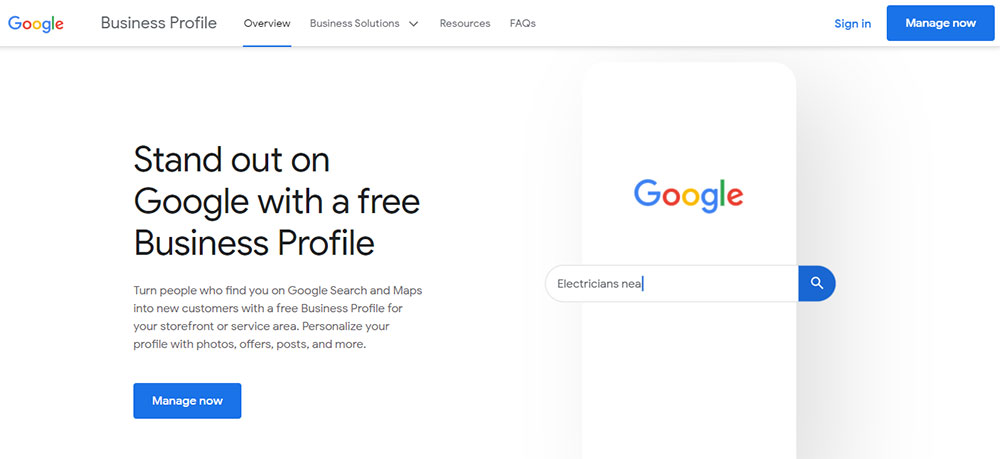
Image from Google Business Profile
Claim your free pages by visiting these websites; they have similar processes that include filling out some info and verifying your business.
Resources for the power pair of SEO & Social Media:
- Google Business Profile: The Ultimate Guide to Optimize Your GBP Listing
- What Every Chiropractor Needs to Know About Their Google Business Profile
- The Ultimate YouTube SEO Guide: How to Get More Subscribers and Better Rankings
- 21 Simple Ways to Boost Your Content’s Viral Potential
Google Passage Rank
Brand, spankin’ new to our list this year is Google Passage Rank. It’s been around since 2020, but this is its year to shine. The feature allows Google to rank specific passages of your content (as it continues to rank your page as a whole).
Don’t let their judgy attitude get you down. This just makes it easier for your page to rank higher. All you have to do is:
- Divide and conquer your pages. You’ve heard this from us before. Using headers, bullets, numbers, etc., is great for UX and scannability, and now it will help Google understand your page and give you credit for a job well done (passage well written). Think of each section like its own little mini web page.
- Create that long-form content we discussed and segment it into pieces. This is another way for Google to find good passages and rank them well.
CTRs
We already spoke about this above but thought we’d give it another shout-out because it’s going big this year.
Your click-through rate is likely falling, and that’s due to many things, such as ads, Google Business Profile, answer boxes, and more. These things make the UX better because they often can find what they need without going to your website, but that’s not great for your CTR.
You’ve got to create excellent content for the SERPs. Your website title tag, page description, and URL should all be click-worthy but not sound spammy. Use your keywords! This is a must because users are more likely to click on a page with their keywords in the title than not.
Feel free to be creative to catch some clicks, but don’t forget to be relevant, or you’ll get a bounce.
Tried and True Old School SEO Practices that Still Matter in 2022
In this article, we’ve gone into detail about some of the most critical elements and newer techniques for a successful SEO campaign in 2021, but that doesn’t mean that some of the best tried-and-true techniques should be overlooked.
The good people at Zyppy.com aggregated the most popular SEO success factors in one place, so you know how to apply your time and resources.
It’s important to note that not all SEO success factors are equal. Here are a few solid and proven SEO best practices that remain important:
- Running an SEO audit
- Making sure your website is crawlable and accessible to search engines
- Making sure you don’t have any broken links
- Quality and quantity of inbound and outbound links
- Uniqueness and freshness of content
- EAT – Expertise, Authoritativeness, and Trustworthiness
- URL structure
You can read their full article 100+ Google SEO Success Factors, Ranked for additional insight.
If you haven’t conducted a simple SEO audit, it’s time to do so! You have to know where you are to know where you should be headed.
Need to run an SEO audit?
Check out these resources:
SEO as Part of a Synergetic Marketing Approach
The world of SEO continues to grow outside of the realm of pure tech.
And thus, SEO must overlap with your other content marketing efforts (content marketing, social media, PR, community outreach, offline campaigns, etc.).
“… tying in your SEO strategy harmoniously with other channels and strategies for both retention and acquisition will be crucial as we move further into the era of ‘assistive search’. We are moving into a stage of ubiquitous computing so joining up the cross-device journey in SEO and tying this in with both blazing fast speed and seamless and frictionless UX as users seek to solve problems and complete intent-driven tasks will be our challenge into the future. Voice Search will continue to evolve and emerge as new formats such as ‘speakable’ and Google’ Dialogflow bank of Google Actions question and answer knowledge grows, feeding into the possible responses for both Actions and Conversational Search. Finding ways to make this work for SEO will be the challenge commercially.” – Dawn Anderson
Awesome SEO Tool & Resources
Here are our go-to resources and tools you can add to your SEO arsenal right now!
This is a list of some of our favorite SEO tools & resources.
Most of these were mentioned earlier in this article.
All SEO tools in this list are free (some are freemium – offering free and upgraded paid options)!
Here are our favorite go-to resources and tools you can add to your SEO arsenal right now!
Most of these were mentioned earlier in this article.
All SEO tools in this list are free (some are freemium – offering free and upgraded paid options)!
Learning SEO Basics
- Search Engine Optimization (SEO) Starter Guide from Google
- Moz SEO Learning Library
- Yoast SEO Basics – SEO library of helpful information
- 100+ Google SEO Success Factors, Ranked
Analytics & Website Tracking
- Google Analytics – Better understand your website visitors by measuring traffic sources, bounce rates, interactions with your content, and more
- Google Search Console – Search Console tools and reports help you measure your site’s Search traffic and performance, fix issues, and make your site shine in Google Search results
- Bing Webmaster – Get a summary view of how well your site is performing and identify what needs emphasis
- Clicky – Clicky is a great option for on-site analytics designed specifically for smaller and medium businesses.
Conduct an SEO Audit
- SEO SiteCheckup – SEO SiteCheckup is a tool that reviews your website and provides a quick free audit that includes site speed recommendations.
- SEO Audit Checklist
- How to Perform an SEO Audit
- A 16‐Step SEO Audit Process To Boost Your Google Rankings
- Screaming Frog’s SEO Spider Tool – SEO audit tool
- Varvy SEO Tool – Quick site checkup
Mobile-Friendly Website Test
- Google’s Mobile-Friendly Test
- Almost all links under SEO audit will test to see if your website is mobile-friendly
Page Speed
- PageSpeed Insights from Google
- GTmetrix – GTmetrix loads your site. Then shows you real-time loading speed and recommendations for getting your website to load faster.
- Dareboost – Offers a website speed test and quality check for free.
WordPress SEO Plugins
- Yoast SEO Plugin for WordPress – Yoast SEO plugin ps you optimize meta tags and content, generate instant sitemaps, and much more.
- All in One SEO Pack – An alternative to Yoast SEO
Define Your Target Market / Buyer Personas
Website UX & Navigation
- 6 Keys to a Solid Website Navigation Structure
- 9 Steps to a Successful Website Campaign
- 13 Common SEO Myths… Busted
- 31 Horrible Website Mistakes You’re Making and How to Fix Them
Voice Search & Video SEO
- Voice SEO: Voice Search Guide & Cheat Sheet
- The Ultimate YouTube SEO Guide: How to Get More Subscribers and Better Rankings
Improve Your SEO Writing
- Looking for more powerful words? Check out 189 Powerful Words That Convert: Write Copy That Gets Your Customer’s Attention Every Time
- 8 Simple Steps for Writing Killer SEO Content
Keyword Research
- Answer the Public – Keyword & search topic tool
- SEMRush – Helps you find keywords your competitors rank for
- Keyword Tool
- Google AdWords Keyword Tool
- Google Trends
- Microsoft Bing Ads Intelligence
- Wordtracker’s Free Basic Keyword Demand
- Moz Keyword Explorer
Backlink & Broken Link Checker
- Ahrefs’ Backlink Checker – Ahrefs’ Backlink Checker shows the top 100 backlinks to any website or web page for free.
- Almost all items under SEO audit will test to see if you have any broken links & some check your bank links
Social Media & SEO
- The Ultimate YouTube SEO Guide: How to Get More Subscribers and Better Rankings
- SEO Cheat Sheet for Facebook, Google, Yelp and Pinterest
- 5 Key Roles Social Media Plays in SEO
- 3 Simple Steps to Increase Your Company’s Exposure on Google
- Google My Business: The Ultimate Guide to Optimize Your GMB Listing
- 10 Simple Local SEO Strategies
- Wix SEO Guide: How to Improve Your Wix Website Ranking
- Squarespace SEO Guide: How to Improve Your Website Ranking
- WordPress SEO: 8 Proven Plugins to Improve Website Performance
- Winning at SEO – No Tech Wiz Necessary
- 5 Secrets to outranking Your Competition Online
- Technical SEO: The Technical SEO Checklist for the Not-So-Technical


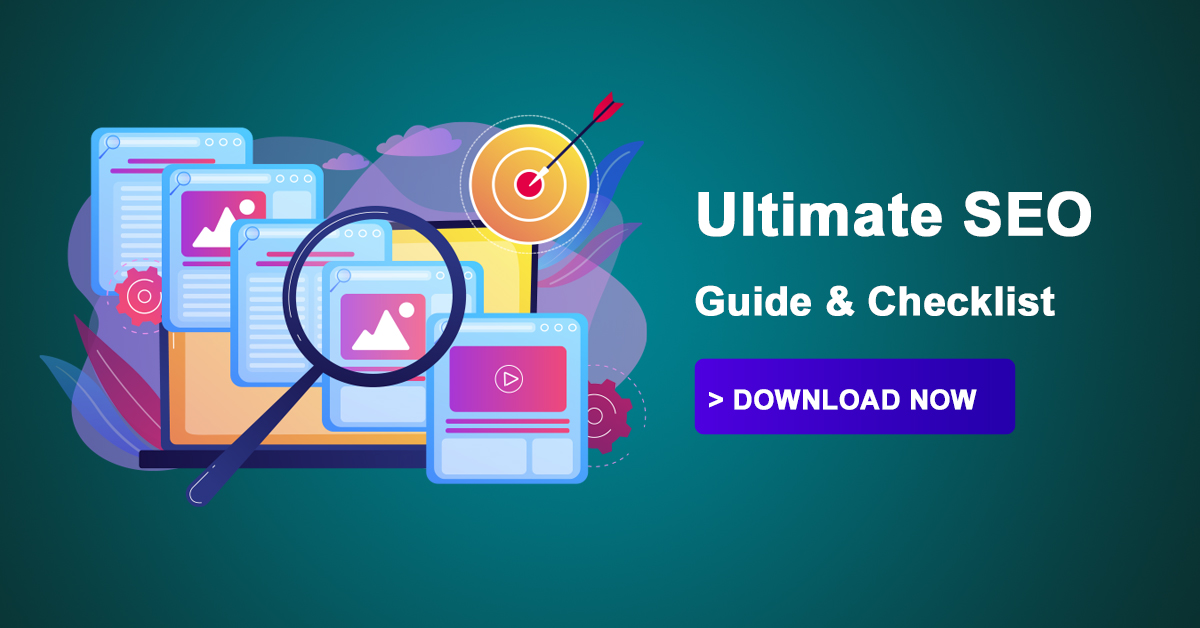

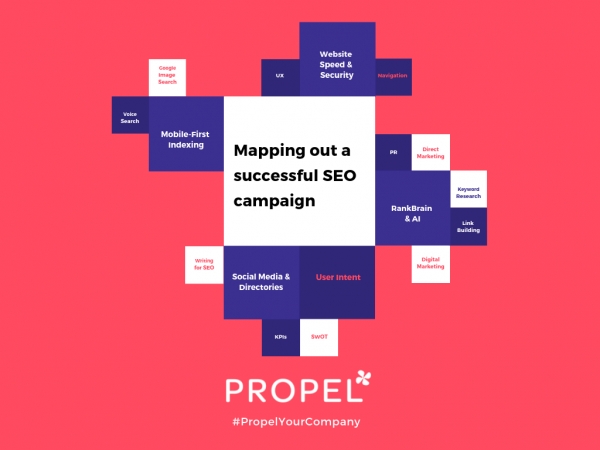

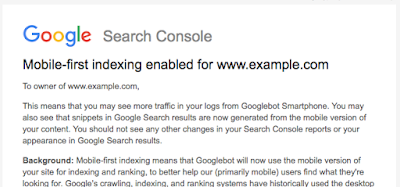





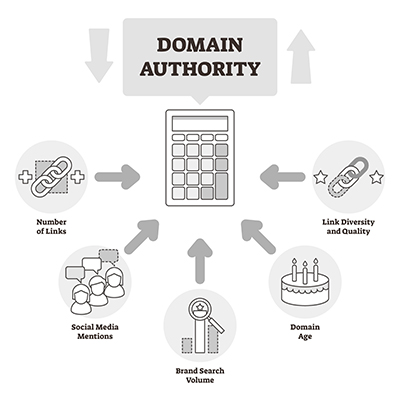 Domain Authority
Domain Authority 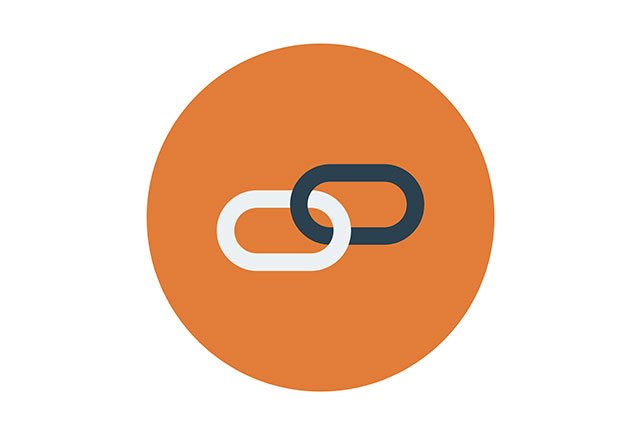 Backlinks
Backlinks 



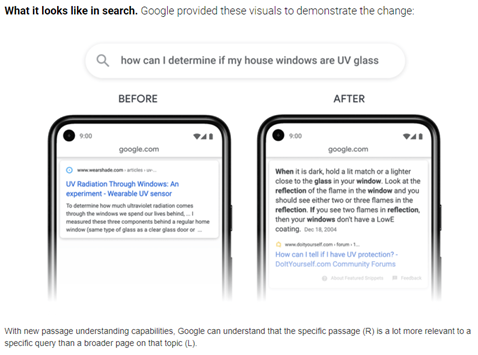





![How to Write a Professional Chiropractic Bio [Template Included]](https://propelyourcompany.com/wp-content/uploads/write-a-bio-500x383.jpg)

